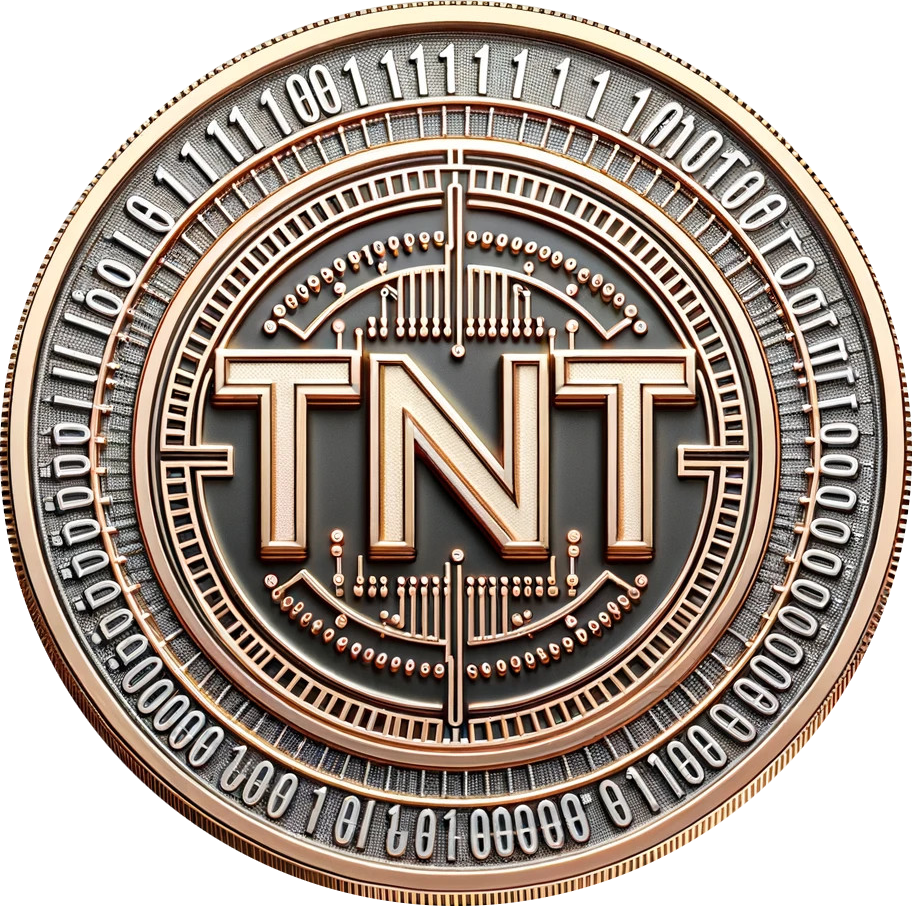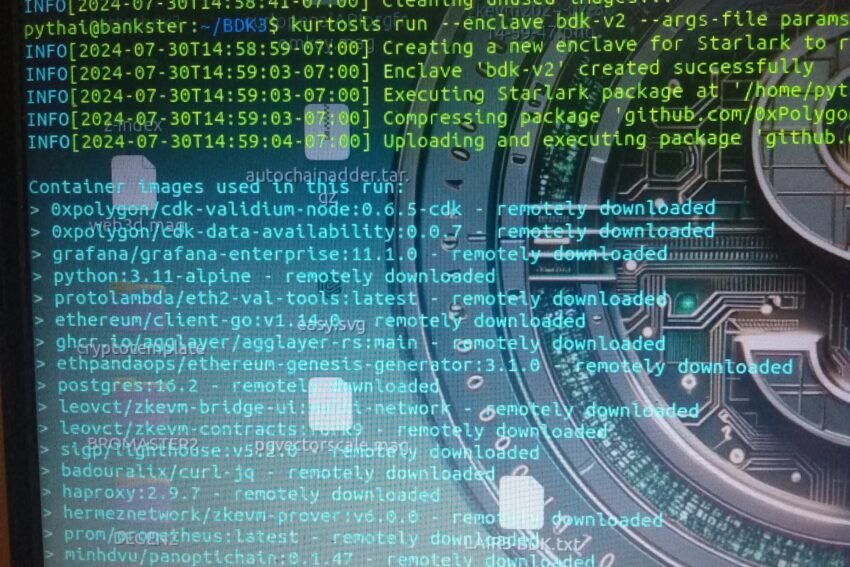Inter-Blockchain Communication (IBC) is a protocol that allows different blockchain networks to communicate with each other. It enables the transfer of tokens and other data across different blockchain platforms in a secure and decentralized manner. IBC is particularly useful in creating interconnected ecosystems where multiple blockchains can work together seamlessly.
Why Use IBC with LAIR3-BDK?
Integrating IBC with the LAIR3-BDK (Layer 3 Blockchain Development Kit) offers several benefits:
- Interoperability: IBC allows the LAIR3-BDK to interact with other blockchain networks, making it possible to transfer assets and data across different blockchains.
- Scalability: By offloading transactions to other chains, IBC can help improve the scalability of the LAIR3-BDK.
- Flexibility: IBC provides the flexibility to use the best features of various blockchains, enabling more robust and versatile blockchain applications.
- Enhanced Use Cases: With IBC, developers can create more complex and interconnected applications that leverage the strengths of multiple blockchains.
How IBC Works
IBC operates using a set of standardized protocols that handle the communication between blockchains. Here’s a simplified overview of how IBC works:
- Relayers: These are off-chain entities that facilitate the communication between blockchains by relaying messages and transactions.
- Clients: Each blockchain maintains a light client of the other blockchain(s) it communicates with. These clients verify the state and consensus of the other blockchain.
- Connections: These are established between clients of different blockchains, allowing them to communicate securely.
- Channels: Logical pathways established over connections that handle specific types of messages, such as token transfers.

Detailed Explanation of IBC Integration with LAIR3-BDK
Integrating IBC with LAIR3-BDK
Explanation of how to integrate IBC with the LAIR3-BDK and what each step does:
Step 1: Install the IBC Relayer to integrate with LAIR3-BDK
git clone https://github.com/LAIR3/BDK.git
cd BDKThe IBC relayer is a crucial component that facilitates the communication between different blockchains by relaying transactions and messages.
docker pull ghcr.io/cosmos/relayerpulls the IBC relayer Docker image from the registry, allowing us to run the relayer as a container.
Step 2: Configure IBC Relayer
Create a configuration file (config.yml) for the IBC relayer. This file defines the blockchains involved, their endpoints, and the paths for communication.
chains:
chain1:
type: cosmos
value:
key: "relayer-key"
chain-id: "chain1-id"
rpc-addr: "http://localhost:26657"
account-prefix: "cosmos"
gas-adjustment: 1.2
gas-prices: "0.025stake"
trust-period: "8h"
chain2:
type: cosmos
value:
key: "relayer-key"
chain-id: "chain2-id"
rpc-addr: "http://localhost:26658"
account-prefix: "cosmos"
gas-adjustment: 1.2
gas-prices: "0.025stake"
trust-period: "8h"
paths:
path1:
src:
chain-id: "chain1-id"
client-id: "07-tendermint-0"
connection-id: "connection-0"
dst:
chain-id: "chain2-id"
client-id: "07-tendermint-1"
connection-id: "connection-1"
strategy:
type: "naive"This configuration defines two chains (chain1 and chain2) and a path (path1) that specifies how messages are relayed between them.
Step 3: Generate IBC Keys
Keys are generated for the relayer to sign transactions on behalf of the blockchains.
rly keys add chain1 relayer-key
rly keys add chain2 relayer-keyThese commands generate and add keys for chain1 and chain2, respectively.
Step 4: Link Blockchains
Establish the connection between the blockchains by initializing and linking them.
rly light init chain1 -f
rly light init chain2 -f
rly tx link path1These commands initialize the light clients for both chains and link them via the defined path (path1).
Step 5: Update params.yml in LAIR3-BDK
Modify the params.yml file to include IBC settings, enabling the deployment of the IBC relayer as part of the LAIR3-BDK setup.
deploy_ibc: true
ibc_relayer:
image: ghcr.io/cosmos/relayer
config: /path/to/ibc/config.yml
commands:
- init
- startThis configuration ensures the IBC relayer is deployed and started with the rest of the LAIR3-BDK stack.
Step 6: Configure Deployment Script
Update the deployment script to include steps for deploying the IBC relayer.
#!/bin/bash
set -e
# Deploy the main stack
kurtosis run --enclave cdk-v1 --args-file params.yml --image-download always .
# Initialize and start the IBC relayer
docker run -v /path/to/ibc/config.yml:/relayer/config.yml ghcr.io/cosmos/relayer init
docker run -d -v /path/to/ibc/config.yml:/relayer/config.yml ghcr.io/cosmos/relayer startThis script first deploys the LAIR3-BDK stack and then initializes and starts the IBC relayer.
Step 7: Deploy the Stack and verify IBC setup and test transaction
Run the deployment script to deploy the LAIR3-BDK stack along with IBC support.
./deploy-stack.sh
rly status path1
rly tx transfer chain1 chain2 1000stake <destination_address>This command sends a test transfer from chain1 to chain2, demonstrating the functionality of the IBC integration.
Benefits of IBC for LAIR3-BDK
- Enhanced Interoperability: IBC allows the LAIR3-BDK to communicate and interact with multiple blockchain networks, enabling cross-chain functionality.
- Increased Scalability: By distributing transactions across different blockchains, IBC can help reduce the load on a single blockchain, improving overall scalability.
- Improved Flexibility: Developers can leverage the unique features of different blockchains, creating more versatile and powerful applications.
- Broader Use Cases: With IBC, the LAIR3-BDK can support a wider range of use cases, including cross-chain token transfers, data sharing, and more.
How Validators and IBC Relayer Work Together
- Validators: Validators are responsible for maintaining the blockchain’s integrity by validating transactions and blocks. They ensure that the blockchain operates correctly and securely.
- IBC Relayer: The IBC relayer facilitates cross-chain communication by relaying transactions and messages between blockchains. It ensures that data and assets can move securely and efficiently across different blockchain networks.
By integrating the IBC relayer with LAIR3 validators, the system ensures that cross-chain transactions are validated and secured by the validators while being efficiently relayed by the IBC relayer. This setup enhances the interoperability, scalability, and functionality of the LAIR3-BDK, enabling more complex and versatile blockchain applications.



